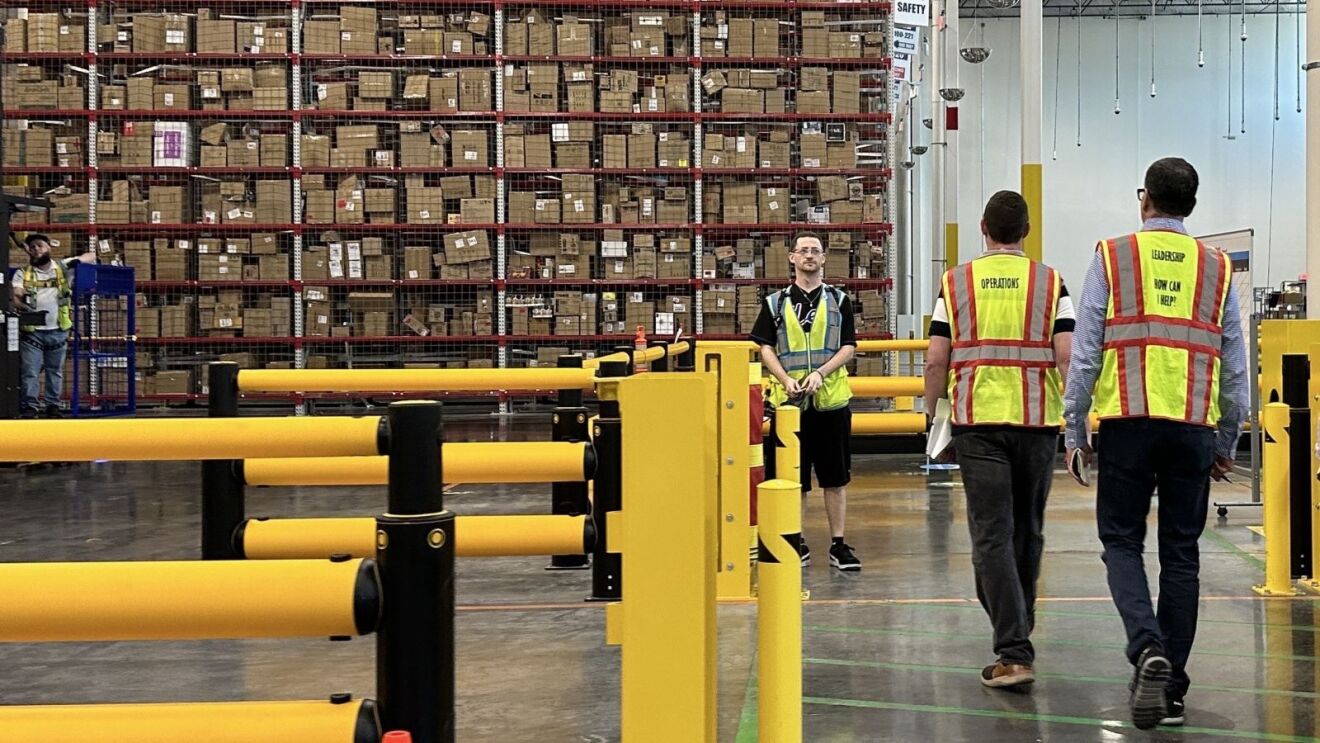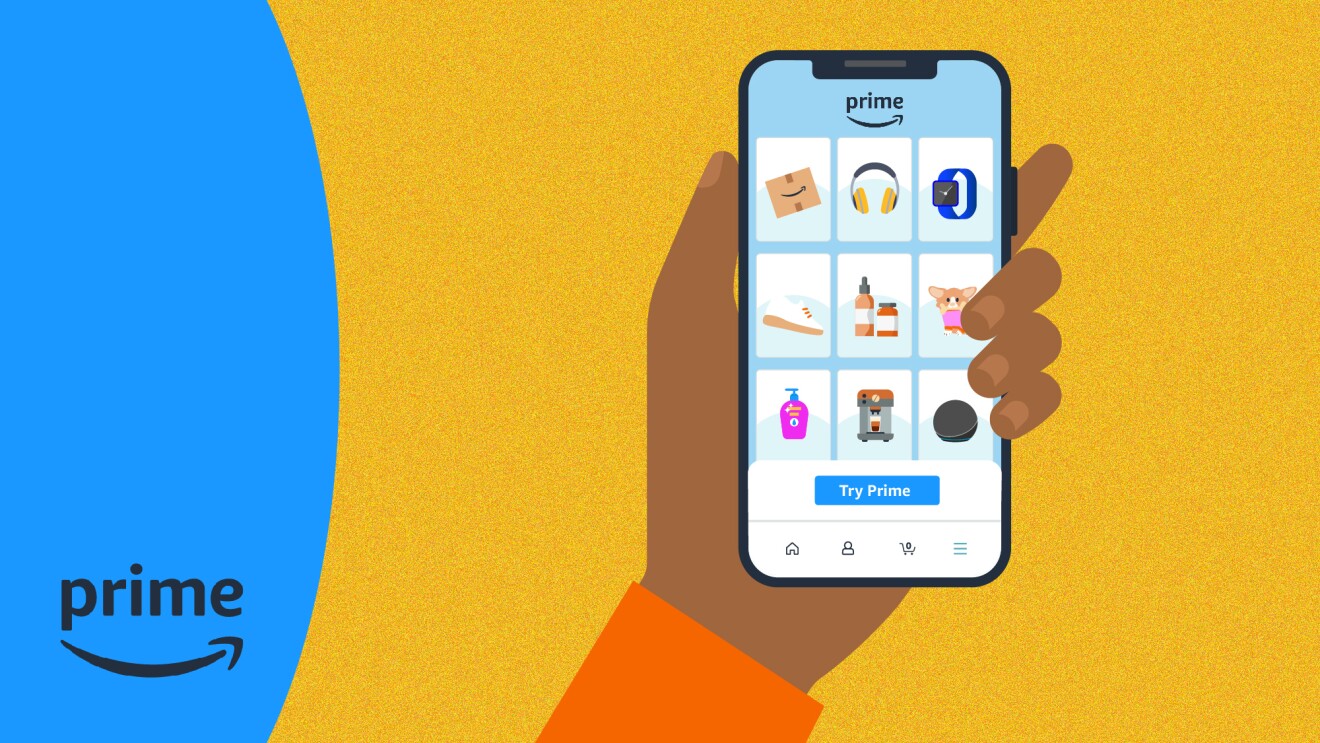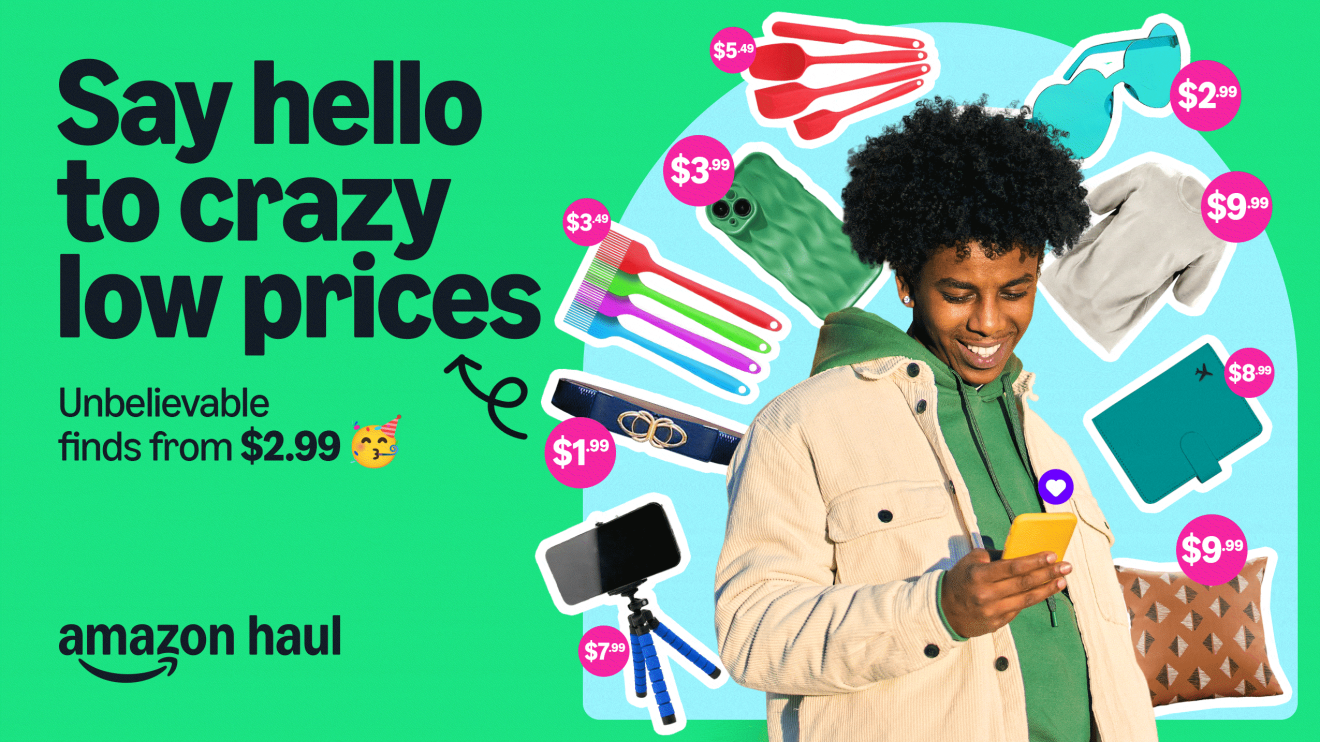Doug Herrington, CEO of Worldwide Amazon Stores, is a California native who grew up in the Bay Area, which is also where he started his career and thought he would stay. But a short-term detour to Seattle to join Amazon in 2005 turned into a nearly two-decade (and counting) tenure. “What brought me to Amazon then is what has kept me here for the last 19 years,” Doug says. “I love the challenge of building something from the ground up, and I love the reward when we see customers using the product or service that we built.”
Doug became Stores CEO in July 2022, having previously overseen Consumables and North American Consumer, among other businesses. “I am proud and humbled to lead a team that serves hundreds of millions of customers, millions of sellers, and employs more than one million full-time Amazon employees around the world,” Doug says.
Doug’s world now includes Amazon’s online and mobile shopping experiences worldwide, Prime, Selling Partner Services, Operations, and emerging businesses like Amazon Business, Grocery, and Health Care. Here are 10 things you might be interested to know about Doug’s background, his priorities, and his approach to leadership.
1. He wanted to be an economics professor.
After studying economics in college, Doug originally had aspirations of becoming an economics professor. But instead of pursuing a postgraduate degree in economics, he decided to get his MBA. He spent ten years as a management consultant at Booz Allen Hamilton, working with national retailers and the large packaged goods companies that sold through them. He still appreciates the unique contribution of economic thinking on thorny problems, and enjoys spending time with Stores’ Chief Economist Chris Nosko and his team. Doug remains an educator at heart: Visitors to his office often leave with a copy of a recent book Doug has enjoyed. Recently, he’s shared copies of “The Toyota Way” by Jeffrey Liker, which describes the Lean management principles developed by Toyota that helped serve as a guide for how Amazon has built out its own operations.
2. He believes failure is the key to success.
During the dot-com boom, Doug spent time in the startup world, including a few years in leadership roles at Webvan, a grocery delivery startup founded by Louis Borders (who also founded Borders, the book and music retailer), and as co-founder and CEO at KeepMedia, a subscription-based digital news service offering personalized news and archived content from 200+ leading publications. While neither of these ventures ultimately succeeded, Doug took a lot of learnings from these experiences to Amazon, and credits this time to fueling his passion for building and inventing. “I experienced a ton of failure during this time, but I loved it,” Doug told a group of Amazon economists during a fireside chat late last year. “I learned for myself that I really loved building.” While he’s led a host of successful innovations at Amazon, including launching and growing Amazon’s everyday essentials and grocery business, he’s had plenty of misses, too—including Amazon’s Treasure Truck, Amazon Pantry, and the Dash Wand. Doug is a true believer in Jeff Bezos’ mantra that “failure and invention are inseparable twins."
3. He led teams that launched Amazon Fresh, Subscribe and Save, Buy with Prime, and Alexa Shopping.

A passion for inventing brought Doug to Amazon—in 2005, he joined the company to launch the Consumables business, and went on to lead teams that launched several notable Amazon businesses. “When I joined at that time, the Consumables team was super small,” Doug remembers. “I think it was only 20 people. Amazon was still primarily a books and electronics company. But it was super exciting—it was an opportunity to transform retail.” Initially, he thought he’d stay at the company for a couple of years and then return to startups. But he discovered that “Amazon felt like a big startup factory. For someone who loves to build, the Lego pieces I got to play with at Amazon were pretty amazing.”
4. In an early meeting with Jeff Bezos, he learned an important lesson about one of Amazon’s Leadership Principles: Have Backbone; Disagree and Commit.
Early in his tenure at Amazon, Doug was presenting a plan that Jeff didn’t agree with. After a rather heated discussion, Doug was expecting Jeff to say “no.” Instead, he said, “You haven’t convinced me. I still don’t like this plan. But I’ll disagree and commit.” And he let the team go ahead. Since then, Doug has tried to model this behavior himself—to always share his opinion, even when it diverges from the group, but to also be willing to bet on his teams even if he disagrees. Disagree and Commit is one of Doug’s favorite Leadership Principles. “If you don’t agree with a decision or have a different point of view, you’re not just encouraged, you’re obligated to share it,” Doug says. “While conflict can be uncomfortable, respectfully surfacing disagreements and alternative viewpoints improves our thinking and helps us get to better decisions.”
5. He believes that 'Amazon’s future is CRaP.'
For a leadership team offsite in 2012, the participants were asked to come to the meeting with a two-page document on any topic they wanted. Doug wrote about his belief that Amazon’s biggest opportunity to grow was through low-priced everyday essentials. In 2012, most of these items fell into a category that was known internally as CRaP (Can’t Realize A Profit) because the cost to pick, pack, and ship was greater than the product’s margin. To make them a more viable part of Amazon’s business would mean lowering Amazon’s overall cost to serve, the all-in cost to get an item in our store to a customer, and delivering these everyday essential items faster to customers. “This is where we've got big opportunity to grow—through lower price, everyday essentials,” Doug wrote. “That’s our destiny.” When Doug took on the role of Stores CEO in 2022, lowering our cost to serve (a term he introduced into the Amazon lexicon) was one of his top priorities. In 2023, Amazon reduced its cost to serve by the largest amount ever, and the first time since 2018. This has also allowed Amazon to grow its selection of products, especially low-priced products. “When cost to serve rises, it puts a handbrake on our business because it basically limits the selection and limits the prices that we can offer in our store,” Doug says. “But when we bring down cost to serve, that unlocks growth by increasing the number and types of products sellers and vendors can sell on Amazon. That’s great for customers and, of course, our sellers too." Those independent sellers, most of which are small and medium-sized businesses, account for more than 60% of Amazon’s sales.
6. He has prioritized improving delivery speeds, and Amazon is now delivering at its fastest speeds ever.

Most recently, Amazon announced that we’ve delivered at our fastest speeds ever in 2024, with five billion items delivered the same or next day globally. During the pandemic, Amazon doubled its fulfilment capacity in the U.S. and also built a massive last mile capability. “Scaling our traditional network so quickly was an amazing accomplishment, but the way we did it came at the expense of delivery speed and cost to serve,” Doug says. To address the problem, Doug and his Operations leadership team rethought Amazon’s Operations network around three key initiatives: 1) “Regionalizing” the operations network, or dividing the U.S. into smaller, easier-to-reach regions to serve different geographic areas; 2) Improving where products were placed in the network, so they were closer to the customers who would order them, through improved machine learning algorithms and a redesigned inbound network; and 3) Growing our network of Same-Day facilities, which are smaller buildings situated close to the large metro areas they serve. All three efforts reduced fulfillment touches, reduced miles traveled, and improved delivery speeds.
7. He believes that lowering cost to serve and improving delivering speeds go hand-in-hand with another of his top priorities: employee safety.
Doug believes that cost and speed don’t have to be in conflict with one another. “Some of our biggest wins in cost turned out to be our biggest wins in speed,” he says. “And for our Operations employees, we have an overriding goal of safety. And the exciting thing is that we’ve made tremendous progress here as well. We’ve learned in this journey that there aren’t tradeoffs between cost, speed, and safety. We’ve got years of opportunity in front of us, and I’m betting we’re going to see new records in each one of these areas.” Over the last four years, Amazon has seen a 30% reduction in our Recordable Injury Rate and a 60% improvement in Lost Time Incident Rate. And we continue to make investments in technologies, resources, training, and programs to keep employees safe.
8. He’s visited 119 (and counting) Amazon operations sites since becoming Stores CEO in 2022.
01 / 07
When Doug first became CEO, one of the first things he did was visit several operations sites. He initially did it to Learn and Be Curious—to see each building type up close, from large-scale sortable fulfillment centers, to delivery stations, to super-fast Same-Day Delivery sites. He loved the experience so much that, two years later, he still takes every opportunity he has to get out in the field and doesn’t plan to stop anytime soon. He says that there are three main reasons: “First, I still learn a ton every time I go to one of our sites. Second, I also love the opportunity to say thank you to operators. If I could visit every single site, I would and say thank you. And finally, selfishly, I love the energy, the pride, and the sense of camaraderie that I feel inside the buildings. I get a strong dose of Amazon culture, and I get a rush every time I go out to the field.” Doug has also joined delivery associates to deliver packages to Amazon customers—on-foot in Manhattan, by delivery truck in Seattle, and by motor bike in India—and learned firsthand how Amazon delivery works differently based on where we operate.
9. He is a big believer in servant leadership to best support frontline teams.

Doug is a lifelong student of leadership. When he took on the CEO role, he went back to some of his favorite books about leadership—especially servant leadership. “A servant leader in my position doesn’t ask, ‘How can I take this million-person organization and use it to make me more effective?’” Doug says. “Instead, a servant leader asks ‘What can I do to make all million people more effective?’” He’s learned a lot from great leaders he’s observed in the field who are role models for leadership behaviors that he’d like to emulate—leaders who listen to their teams, put their team's needs above their own, genuinely focus on the growth and development of their employees, and who are humble yet inspiring in how they lead.
10. He hosts a regular AI ‘show and tell’ meeting in his office.
What started as a personal Learn and Be Curious mechanism two years ago has now become a regular way for Doug to hear from people across his team on the latest AI-powered innovations they’re prototyping, building, or launching. Teams have come to showcase their inventions on everything from enhancing the catalog, to improving customer and seller support, to launching a conversational shopping assistant, to improving the speed and dexterity of our robots. “This is the biggest technology transition Amazon has ever faced. The good news is: I’m highly confident we have the foresight and culture of innovation to not only manage this transition but to be leaders in it,” Doug says. “I feel lucky to be participating in this massive transformation at Amazon.”
Bonus: He’s purchased the same pair of socks 82 times.

As a lifelong runner, and more recently a rucker, having quality running socks is important to Doug. His favorite pair are these from Balega International that he found on Amazon several years ago. But they seemed to always go missing from his sock drawer—he discovered the rest of his family were also big fans of these socks. Now with the help of a Subscribe & Save subscription, he can make sure his sock drawer is never empty.
Trending news and stories
- Amazon unveils 7 new robots powering faster, safer deliveries: Go inside our most innovative delivery station yet
- Introducing Vulcan: Amazon's first robot with a sense of touch
- This new AI tech will make sorting packages easier for Amazon's delivery station employees
- 15 photos from Project Kuiper's first launch of low Earth orbit satellites





















